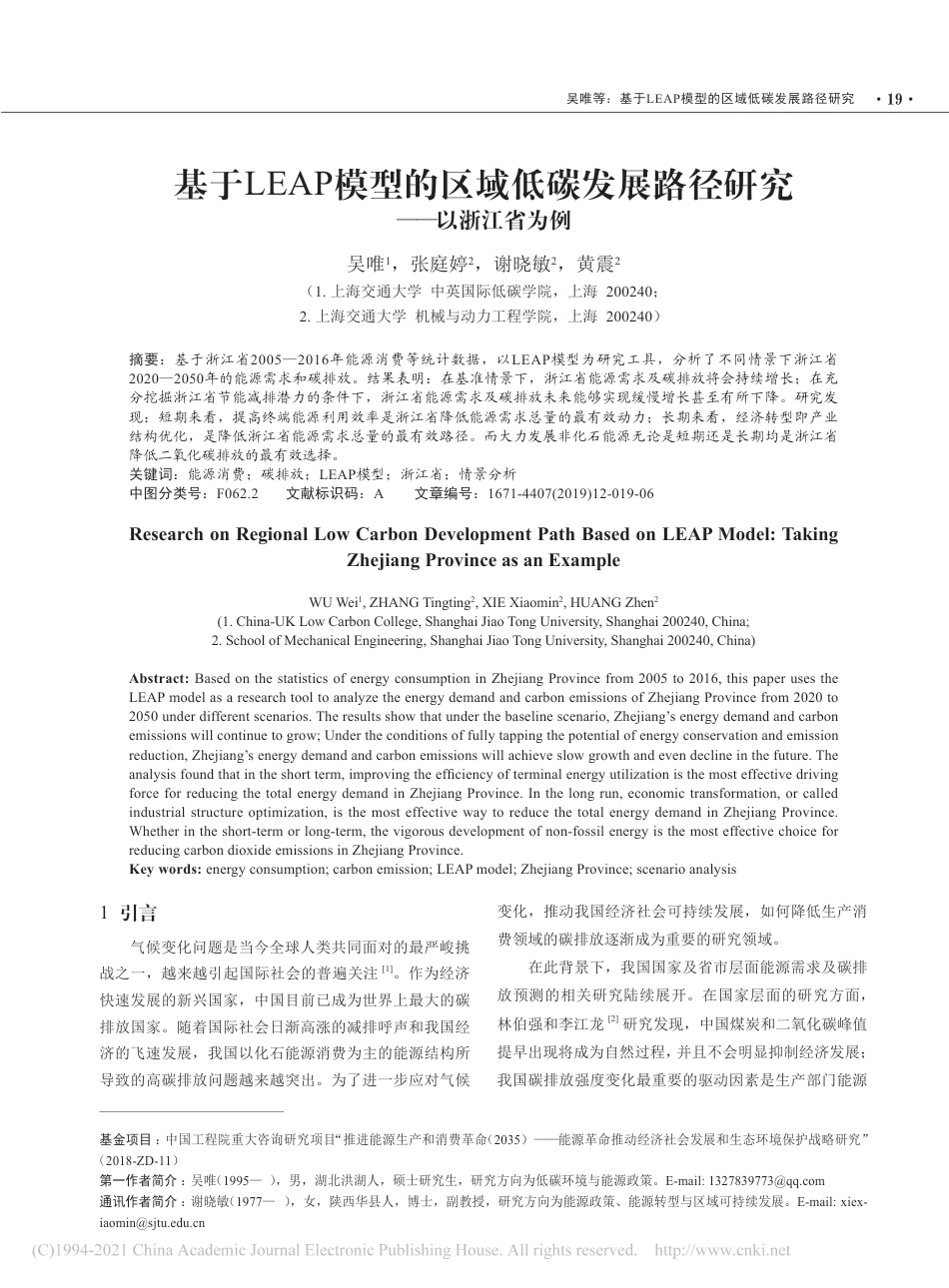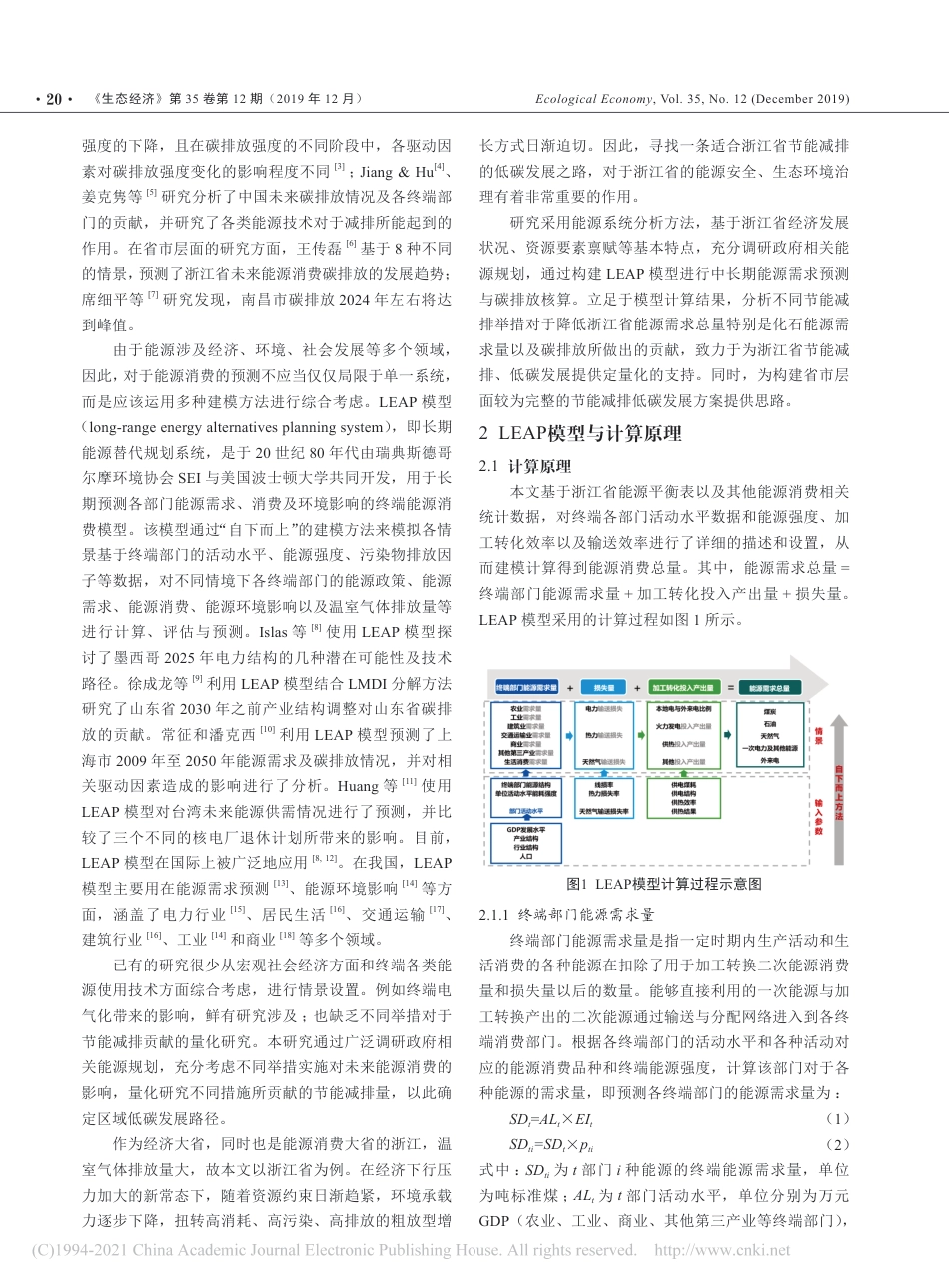·19·吴唯等:基于LEAP模型的区域低碳发展路径研究空基于LEAP模型的区域低碳发展路径研究——以浙江省为例吴唯1,张庭婷2,谢晓敏2,黄震2(1. 上海交通大学 中英国际低碳学院,上海 200240;2. 上海交通大学 机械与动力工程学院,上海 200240)摘要:基于浙江省2005—2016年能源消费等统计数据,以LEAP模型为研究工具,分析了不同情景下浙江省2020—2050年的能源需求和碳排放。结果表明:在基准情景下,浙江省能源需求及碳排放将会持续增长;在充分挖掘浙江省节能减排潜力的条件下,浙江省能源需求及碳排放未来能够实现缓慢增长甚至有所下降。研究发现:短期来看,提高终端能源利用效率是浙江省降低能源需求总量的最有效动力;长期来看,经济转型即产业结构优化,是降低浙江省能源需求总量的最有效路径。而大力发展非化石能源无论是短期还是长期均是浙江省降低二氧化碳排放的最有效选择。关键词:能源消费;碳排放;LEAP模型;浙江省;情景分析中图分类号:F062.2 文献标识码:A 文章编号:1671-4407(2019)12-019-06Research on Regional Low Carbon Development Path Based on LEAP Model: Taking Zhejiang Province as an ExampleWU Wei1, ZHANG Tingting2, XIE Xiaomin2, HUANG Zhen2(1. China-UK Low Carbon College, Shanghai Jiao Tong University, Shanghai 200240, China;2. School of Mechanical Engineering, Shanghai Jiao Tong University, Shanghai 200240, China)Abstract: Based on the statistics of energy consumption in Zhejiang Province from 2005 to 2016, this paper uses the LEAP model as a research tool to analyze the energy demand and carbon emissions of Zhejiang Province from 2020 to 2050 under different scenarios. The results show that under the baseline scenario, Zhejiang’s energy demand and carbon emissions will continue to grow; Under the conditions of fully tapping the potential of energy conservation and emission reduction, Zhejiang’s energy demand and carbon emissions will achieve slow growth and even decline in the future. The analysis found that in the short term, improving the efficiency...



